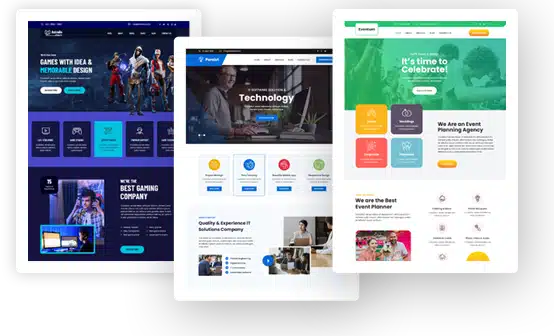Boost Software Development with Generative AI

How does generative AI specifically boost software development productivity?
Generative artificial intelligence (GenAI) can immediately increase your productivity and speed by 20–50% if you are assisting in the leadership of your company’s software development. Additionally, GenAI can raise customer happiness and enhance product quality. It may potentially lead to the development of entirely new product and service categories. Whether your focus is on product development, business support, or both, you can still get these benefits. Whether your developers are at service providers or in-house, they are accessible.
For the GenAI system, creating a poem in English, Spanish, or Latin with a certain rhyme scheme and meter is the same as coding. Additionally, there is a huge chance to use GenAI to support the software development process: According to PwC analysts, a development team can currently achieve performance gains of 20% to 50% when using GenAI code-generating technologies.
Let’s explore the ways Generative AI development services can boost Software Development in this post.
7 Ways GenAI Can Help Improve Software Development
GenAI-based development tools can serve as full-time team members or as assistance to individual enterprise software engineers in various contexts. From software design to software deployment, these are some of the most prevalent areas where technology can be useful today. Many businesses are turning to AI development company to integrate these tools effectively into their workflows.
-
Bug Detection and Debugging
Code mistakes can be effectively found, fixed, or suggested by GenAI systems. Defect remediation is, of course, a whole industry; both open source and commercial tools are capable of scanning source code for functional or security flaws, such as memory leaks, attempts to access protected memory, multithreaded execution problems, and subtle errors that might only appear when the system is heavily loaded.
Bug remediation can benefit from GenAI in several ways. To determine whether the code will accomplish the developer’s or stakeholder’s planned goals, it could first employ prompts. This is because even if the code compiles and executes well, it may not perform the appropriate action or yield the intended outcome. Second, GenAI can assist in condensing defect data from conventional tools so that developers and test teams can identify patterns of incorrect code, understand minor issues, and suggest fixes—while also supporting the development of key qualities of a software engineer like critical thinking and problem-solving.
-
Code Generation
GenAI can write code automatically in response to instructions or prompts. Teams aiming to scale this capability often rely on expert generative AI development services that deliver tailored tools for prompt engineering, secure model training, and seamless integration into development workflows. As previously said, it is unlikely that GenAI will provide a sophisticated business application soon. Nonetheless, it can assist in producing code snippets that may apply a complex algorithm, call a challenging method, or access external resources, as well as boilerplate code that developers can finish.
For instance, a lot of developers are proficient at reading, writing, and updating database data using SQL. Writing SQL stored procedures that can manage intricate database tables and function well over enormous data sets, for instance, is an art. After assisting the programmer in expressing the needs for database access through prompts, GenAI tools can offer a proposed SQL call or procedure that can be copied and pasted into the application.
-
Code Review
Reviewing code quality, security, and best practices can be aided by GenAI. A crucial step in the software development process is code reviews, in which a group examines sophisticated code that is displayed on a screen or large monitor to confirm that it works as intended and to identify areas for improvement. Code reviews may be difficult for developers, particularly when they are surrounded by senior software engineers who only see flaws. Additionally, code reviews take a lot of time, and many individuals just want to finish them as soon as possible, which could lead to a lack of diligence.
By guiding developers through an initial code review to identify glaring problems, GenAI can assist. This can speed up in-person review sessions and aid in the learning of junior devs. Additionally, GenAI can participate in the group code review team by pointing out areas that need more focus and even providing advice on how to improve.
-
Documentation
AI can automatically create or enhance codebase documentation. When evaluating software they built just a few months ago, developers often question themselves, “What in the world was I thinking?” even when they had the greatest of intentions. For this reason, documentation is crucial on many levels, including the architecture of the entire project and the objectives of individual modules or microservices. When the developer has an option, documentation within modules and services can help clarify the choices made for libraries, APIs, and algorithms. There had to be a reason—what was it? GenAI can assist by asking the developer to justify those choices while the code is being written, then condensing those justifications into clear documentation.
Additionally, the GenAI may provide comprehensive documentation explaining the purpose of the code snippet or microservice and how to use it correctly when it is used to assist in generating the code itself.
-
Learning and Training
To assist developers in becoming more proficient, GenAI may offer real-time examples and explanations. Even, or perhaps especially, rock star programmers are always learning new things. In addition to new tools, language features, design patterns, security flaws, corporate standards and best practices, and even new compliance needs, new technologies like artificial intelligence and microservices are always emerging.
Ongoing assistance is beneficial even though there are many classes and courses available, as well as internal training and mentoring. GenAI has the potential to deliver immediate, individualized training and identify when a developer is having trouble, such as when they are attempting to use an outdated API or deprecated feature. Through prompts, it can also assist in giving immediate assistance when the developer is unsure of how to do a new or infrequently used job. It resembles a help screen that has been tailored to that particular circumstance.
-
Refactoring
GenAI can assist in reorganizing and optimizing existing code to improve performance. A crucial step in the software development lifecycle is refactoring, which is the process of improving a segment of code’s performance without altering its functionality. This could entail utilizing a new language command, updating an algorithm, utilizing a new microprocessor shortcut, decreasing memory usage, increasing speed and scalability, or changing an algorithm. Runtime metrics are used by developers to identify and alter parts of code that are slow, utilize excessive amounts of resources, or result in end-to-end delays.
As developers feed the faulty code into the system and effectively ask, “Can you make a version that runs faster?” refactoring would be the perfect setting for GenAI code generation. We’re oversimplifying, but GenAI’s predictive powers may frequently help it identify a better strategy by observing what the code does and how it operates. Furthermore, it is simple to ascertain the advantages of the refactoring process and confirm that the underlying functionality remained unchanged because the old code and the refactored code can be compared and benchmarked.
-
Testing
GenAI can assist in simulating edge cases, automating testing procedures, and creating test cases. Every methodology has a different perspective on the software testing process. To guarantee that everything you write will function as intended, test-driven development (TDD), for instance, requires that you establish test cases before writing a single line of code. In some approaches, testing is done by a specialized testing team; in others, it may be done by the development team after a sprint. Depending on the approach, stakeholders play a variety of crucial roles in testing: Stakeholders may examine merely release candidates in some situations, or they may be actively involved in others.
GenAI can support testing and test management in several ways. We talked about problem identification, but GenAI can also assist in creating scripts that may be used as tools for test automation, which is a laborious procedure for many developers. These GenAI-enhanced tools can also aid in testing for edge cases, which are scenarios that are unlikely to happen but still require a code module, stored procedure, or microservice to handle them appropriately. Furthermore, GenAI may assist in evaluating test cases—including human-written ones—to make sure they are sound and cover all potential scenarios, such as error conditions and runtime code hacking attempts.
Conclusion
Regardless of your perspective, GenAI is still in its beginning and will undoubtedly find new applications in fields like software development. We’ll take a chance, though: What can we anticipate in the upcoming years?
GenAI can support development teams with code generation, quality assurance, documentation, and test case creation—all of which it can now do, but better. To guide developers and non-developers through the process of generating requirements and then converting those needs into project plans, documentation, test cases, and code, GenAI may become more conversational and more adept at interacting with people.
Working with a Generative AI Development Company may help organizations realize the full potential of generative AI by offering specialized solutions and invaluable experience.

